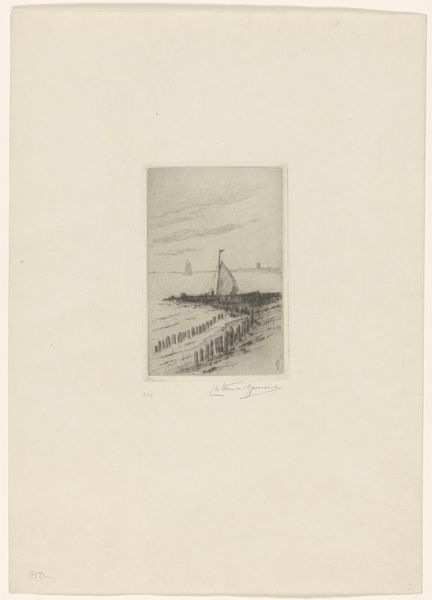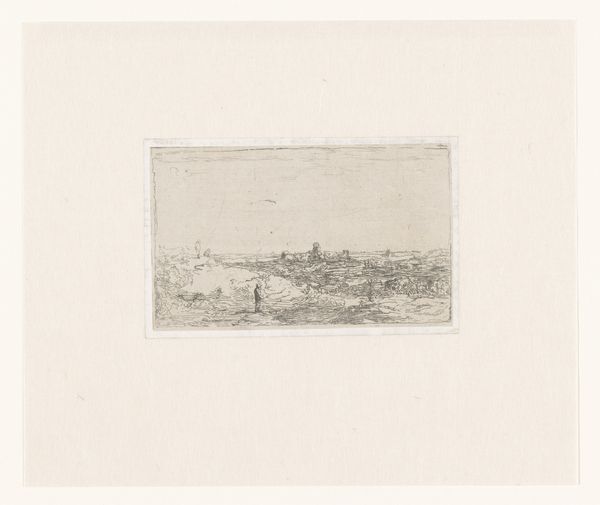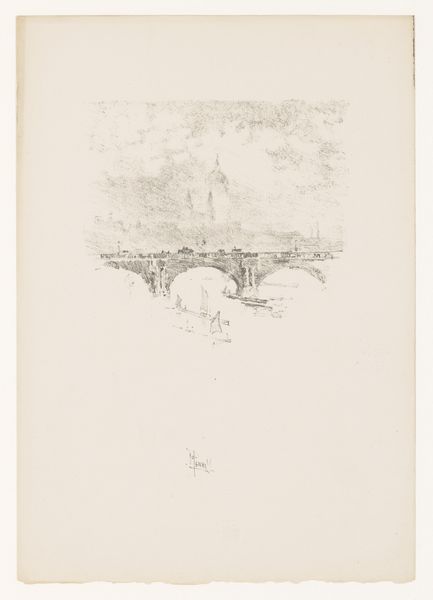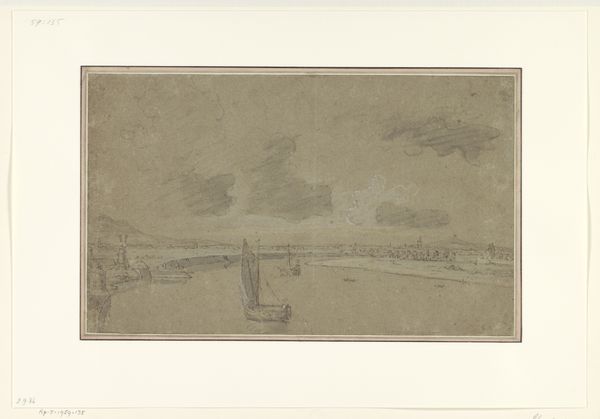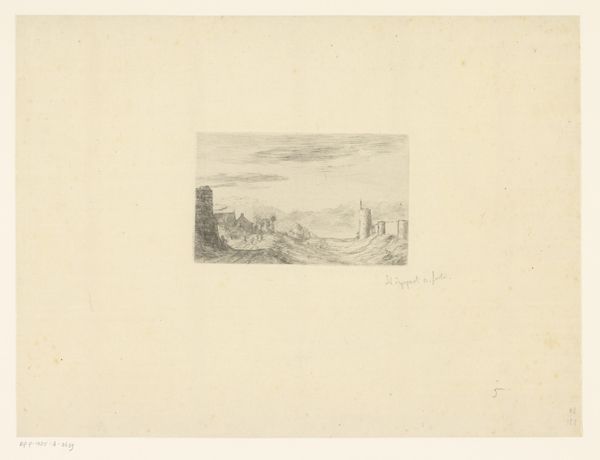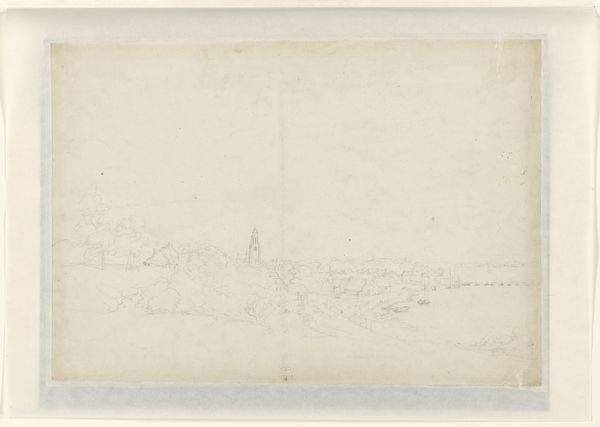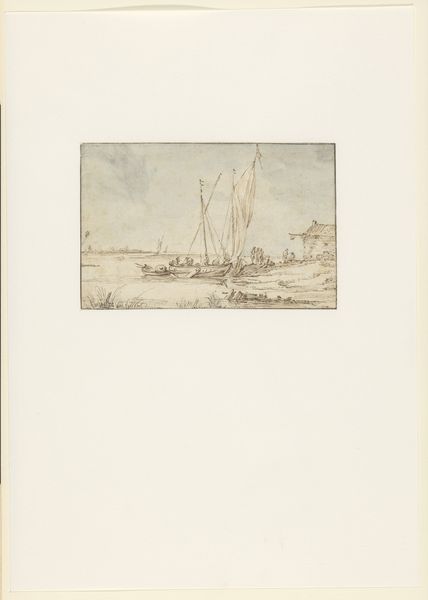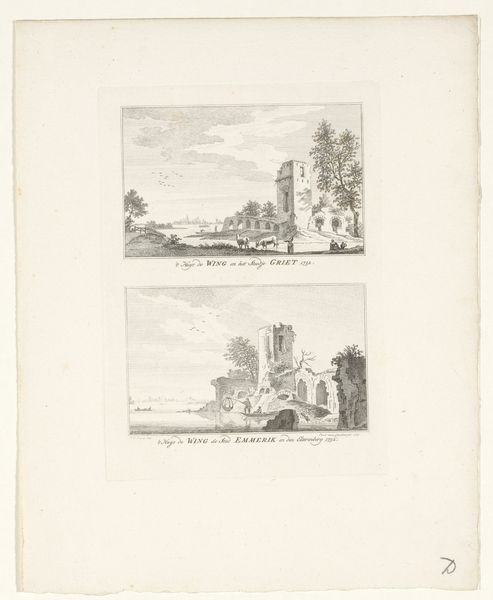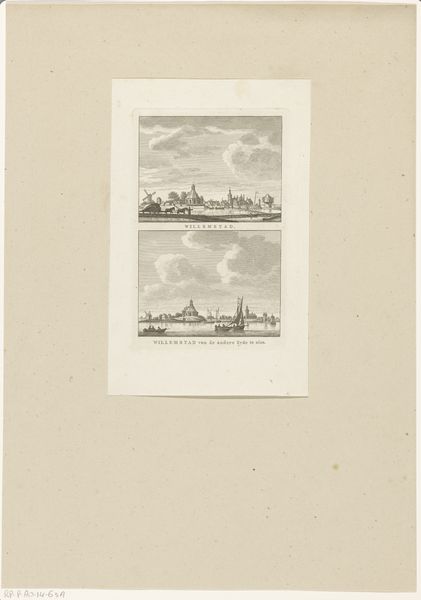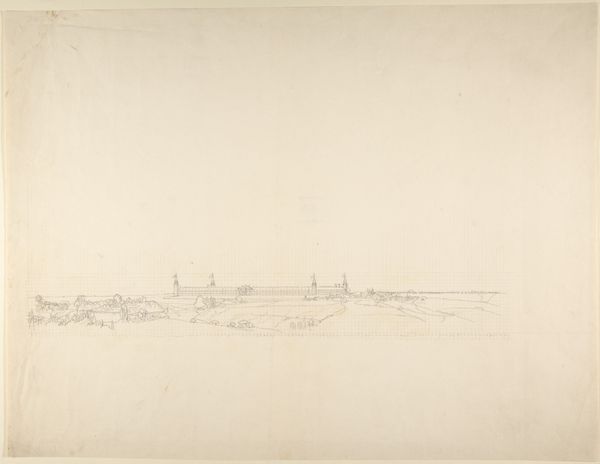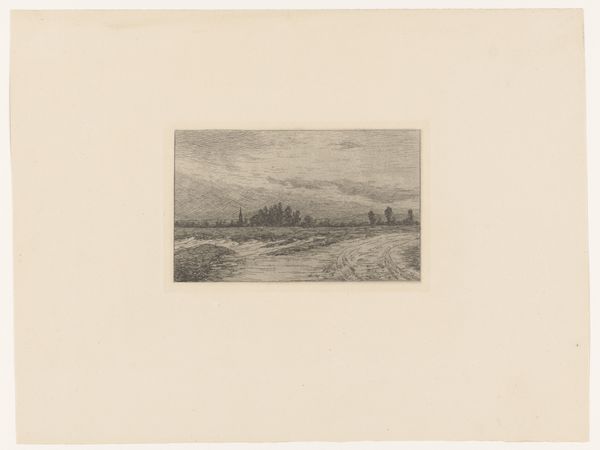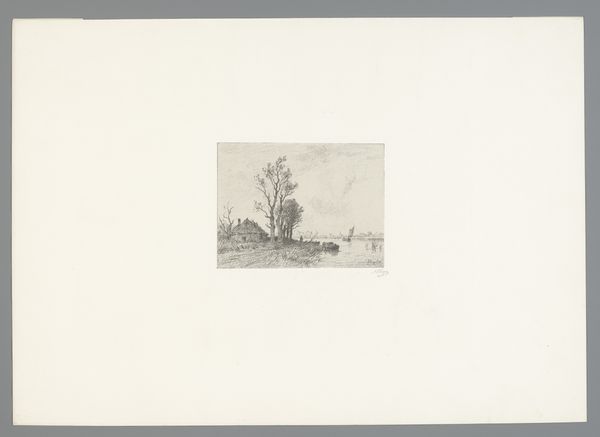
drawing, pencil
#
drawing
#
dutch-golden-age
#
old engraving style
#
landscape
#
pencil
#
sketchbook drawing
#
pencil work
#
genre-painting
Dimensions: height 80 mm, width 130 mm
Copyright: Rijks Museum: Open Domain
Curator: "Zeekust met een kasteel," or "Seacoast with a Castle," attributed to P. Kuylaert, dates from the 17th century, rendered in pencil, providing a glimpse into the world and the artistic practices of the Dutch Golden Age. Editor: Oh, it feels so airy and dreamlike! It’s like looking at a memory through a dusty window. A quick impression, with castle remains overwatching a sandy beach. Curator: Indeed. The tangible elements - the pencil, paper, and the skilled hand manipulating them - these aren’t just materials, but social conduits. They represent economic investment in artistic skill and also imply an audience consuming a certain view of their environment. I’m keen on noting that pencil, increasingly used at the time, offered a less expensive tool for creating artworks or sketches, leading to broader creation possibilities and art distribution. Editor: Fascinating to think about affordability changing the art landscape like that. Looking at it now, I see those tiny figures on the beach almost dissolving into the sand; a sense of fleeting moments, of the grandness of nature swallowing everything. It gives me that wonderful, melancholy seaside feeling. Curator: A product of specific artistic training meeting a broader trend for landscape appreciation in the Golden Age! Consider that landscape was gaining legitimacy as a serious subject, not just background—a reflection, in part, of the Dutch Republic's prosperity and identity rooted in its land and seascapes. Genre-painting like this, even, can be seen as product. Editor: So it becomes this cultural mirror… beyond just pencil on paper! The sketchiness, almost unfinished quality, lends it this intimate, observational vibe. I keep imagining the artist right there on that beach, squinting at the sunlight and quickly capturing this little piece of existence. Curator: Precisely. By considering its art market dynamics of 17th-century Holland, the artist's decision about form and genre, we grasp more fully its place in visual culture. Editor: Absolutely! It has something of eternity captured in the humble strokes of pencil. Curator: An interesting lens through which to understand that a quickly rendered piece can transmit to us echoes of labor and leisure that ripple even now.
Comments
No comments
Be the first to comment and join the conversation on the ultimate creative platform.
